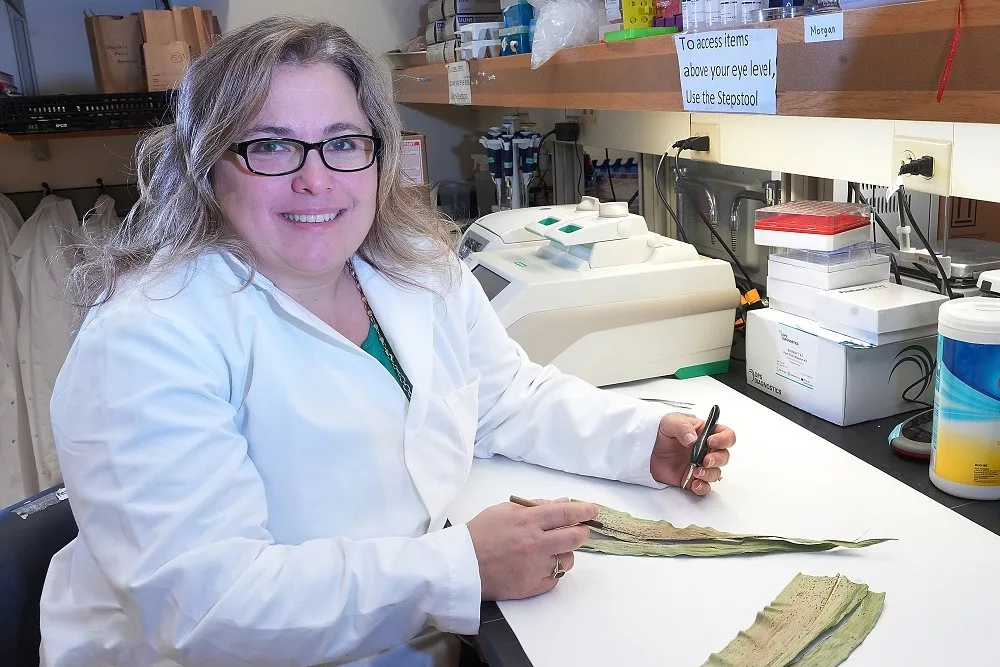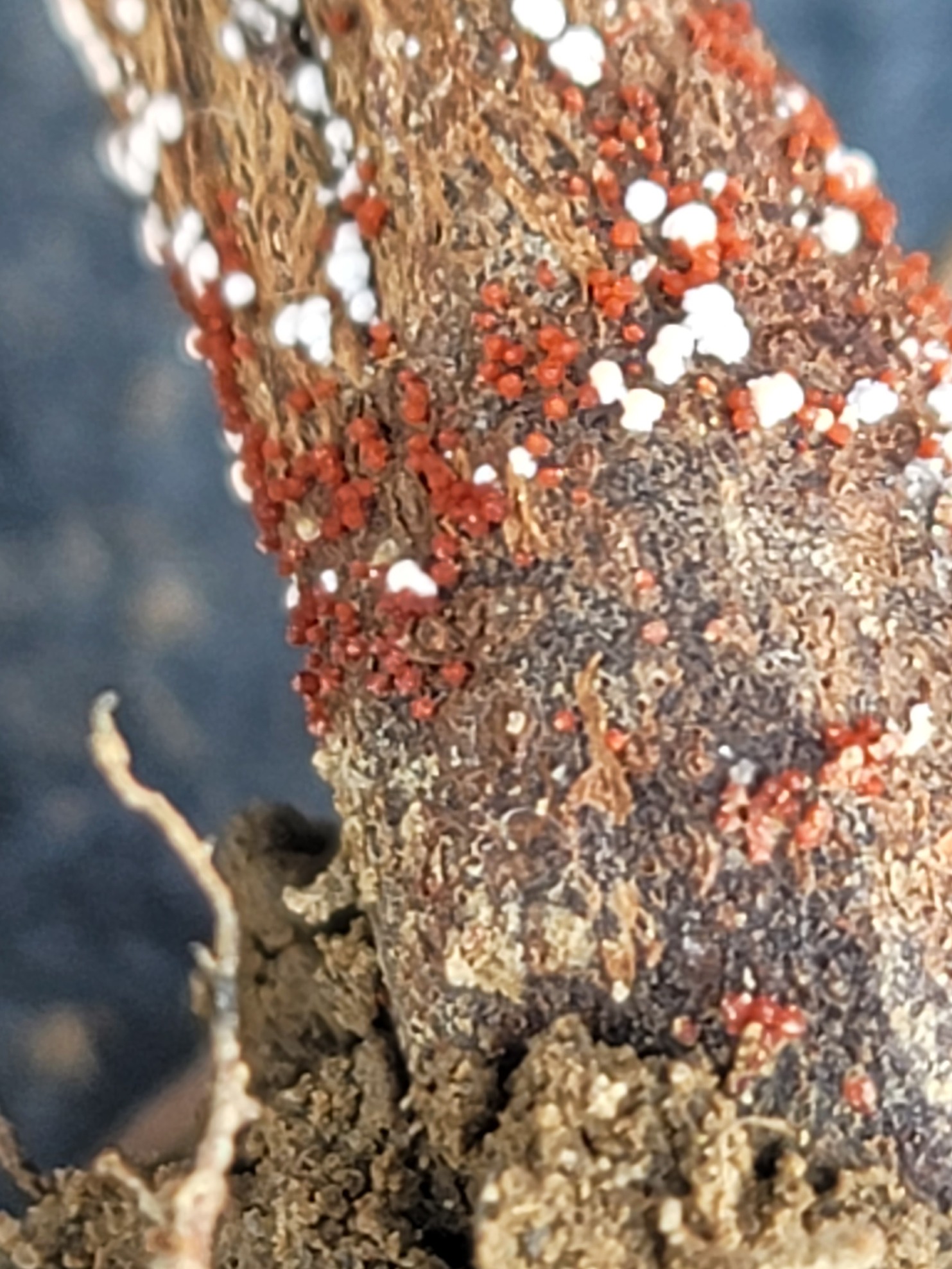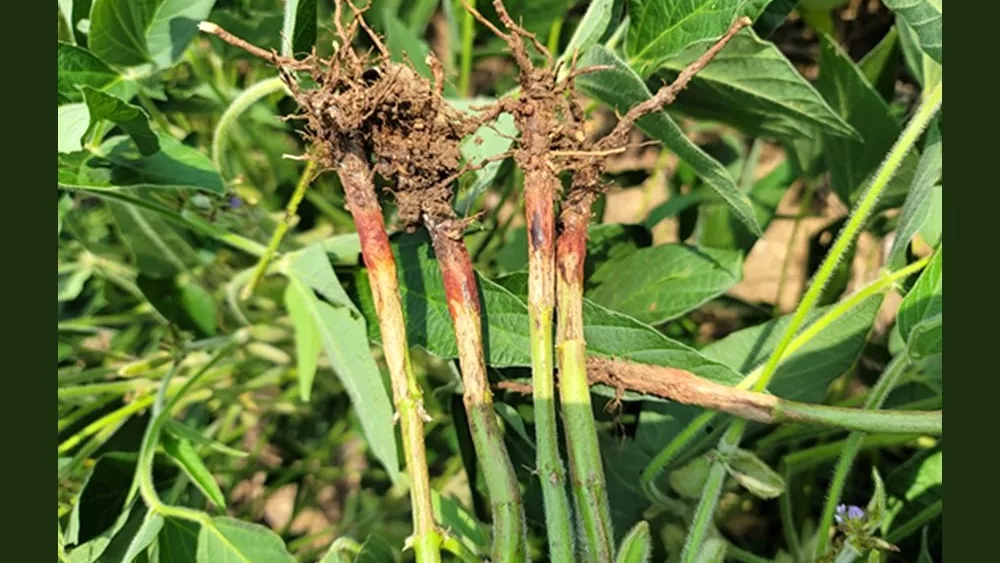
A fungal disease called Red Crown Rot has been found in Indiana’s soybean fields—and one of the nation’s leading crop pathologists wants farmers to know about it.
“Red Crown Rot is caused by a soil-borne fungus. As the name suggests, it affects the roots in the crown of the soybean,” according to Dr. Darcy Telenko, Associate Professor and Field Crop Pathologist in the Department of Botany and Plant Pathology at Purdue University.
The disease has been common in southern states for decades, but its appearance in Indiana, Illinois, Kentucky and other Midwest states is new.
She says Red Crown Rot was first found in Indiana just two years ago—but as of two weeks ago, it’s now been confirmed in five Indiana counties: Adams, Bartholomew, Decatur, Rush, and Spencer.
Telenko says the disease is a major yield robber.
“This pathogen pretty much eats up the root system, so we’ve seen up to 50-percent yield loss of those plants,” says Telenko. “The pods aren’t going to develop, there’s no root system to feed that plant, so some of those pockets where it’s found in a field will be severely hit with yield loss. It may not be widely spread through a field—maybe only 10-to-15 percent of those pockets have the disease.”
Telenko says that Red Crown Rot mimics a couple of other diseases that also impact soybeans.
“Your symptoms can mimic those of Sudden Death Syndrome (SDS), and then it also may mimic Brown Stem Rot as well, so it’s important for the growers to go out and look at the crown and see what’s really causing those early symptoms of where you have patches of yellowing soybeans going on in the field,” says Telenko.

Like those diseases, Red Crown Rot can cause yellow speckling on leaves and interveinal necrosis and chlorosis, where the veins remain green and the tissue between veins yellows or browns.
Red Crown Rot differs from Sudden Death Syndrome because the leaves may stay attached instead of dropping. As the name implies, the disease also causes the crown, or area of stem near the soil line, to turn red. Fungal structures may appear on the red tissue, but they do not always appear.
Unlike Tar Spot in corn, she says the fungus that causes Red Crown Rot is spread through the soil.
“The fungus is only going to move when we move contaminated soil that are infected with the disease or infected debris, so it’s not going to move like we’ve seen Tar Spot move, which has aerial spores,” she says.
Unfortunately this late in the growing season, Telenko says there isn’t much that can be done to stop the issue if you find it in your soybean fields.
“What’s important now is to understand if they have the disease in their field so that they can make disease management decisions in the future,” she says.
Telenko wants to track the disease across the state, which is why she’s asking farmers to send along any suspected Red Crown Rot samples of soybeans to the Purdue Plant and Pest Diagnostic Laboratory (PPDL).
“It’s important not only for [farmers] to confirm what disease is there, but also it’ll help us track how widespread this problem is really in Indiana,” she says.
Farmers can submit suspected Red Crown Rot samples of soybeans to the following address below at no charge.
Plant and Pest Diagnostic Laboratory
Purdue University
915 Mitch Daniels Blvd., LSPS 116
West Lafayette, IN 47907-2054
Farmers should ship samples early in the week with proper labeling. Each sample label should include the collection date, soybean variety, field zip code or county, and previous crop at that location.
If you have questions, contact the Purdue Plant and Pest Diagnostic Laboratory at ppdl-samples@purdue.edu or 765-494-7071.
Click HERE for IndianaCropPathology.com.
 Close analysis reveals the fungal structures that many plants infected with Red Crown Rot develop.
Close analysis reveals the fungal structures that many plants infected with Red Crown Rot develop. Red Crown Rot has many symptoms, including the formation of fungal structures near the roots.
Red Crown Rot has many symptoms, including the formation of fungal structures near the roots.





